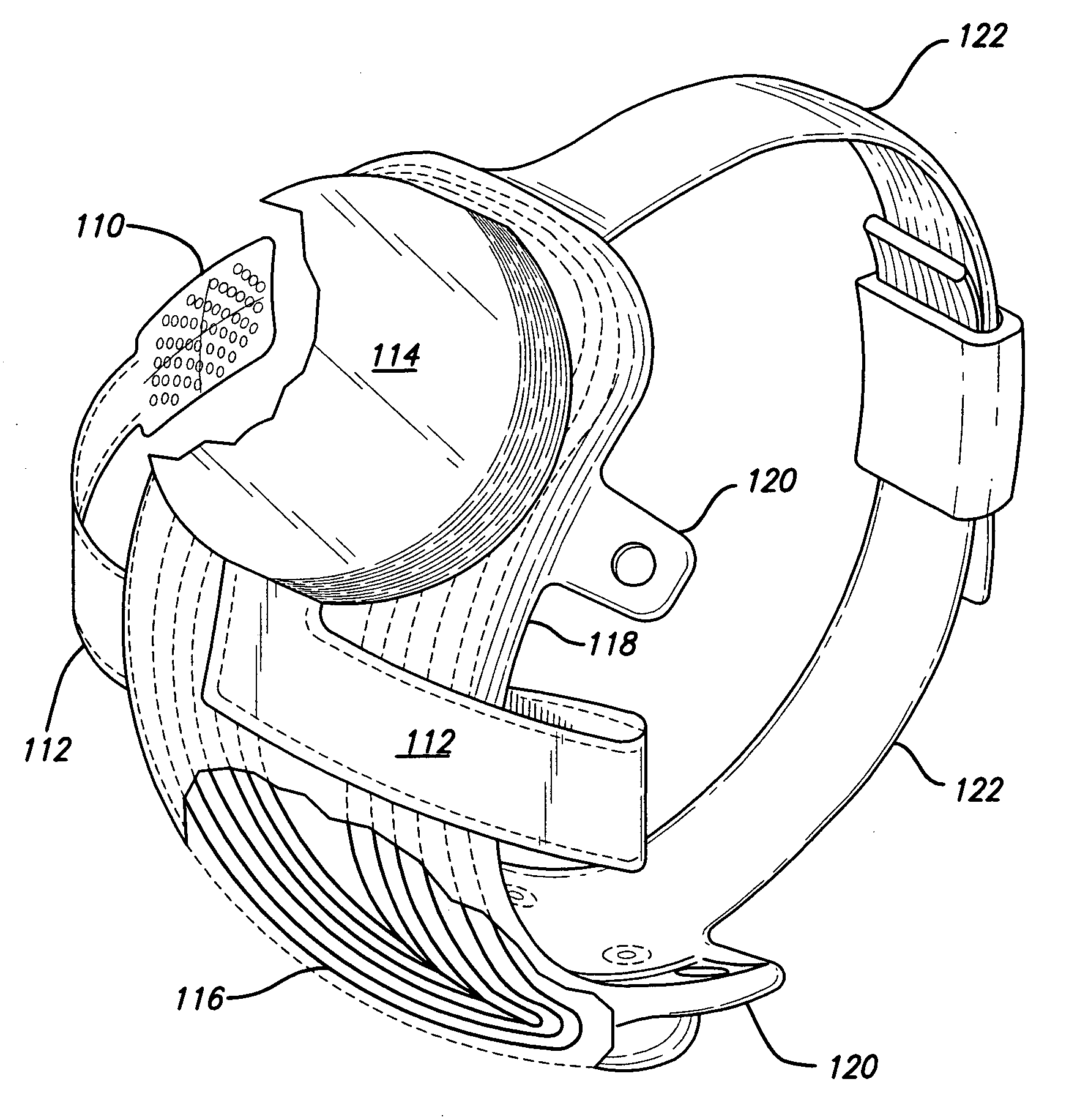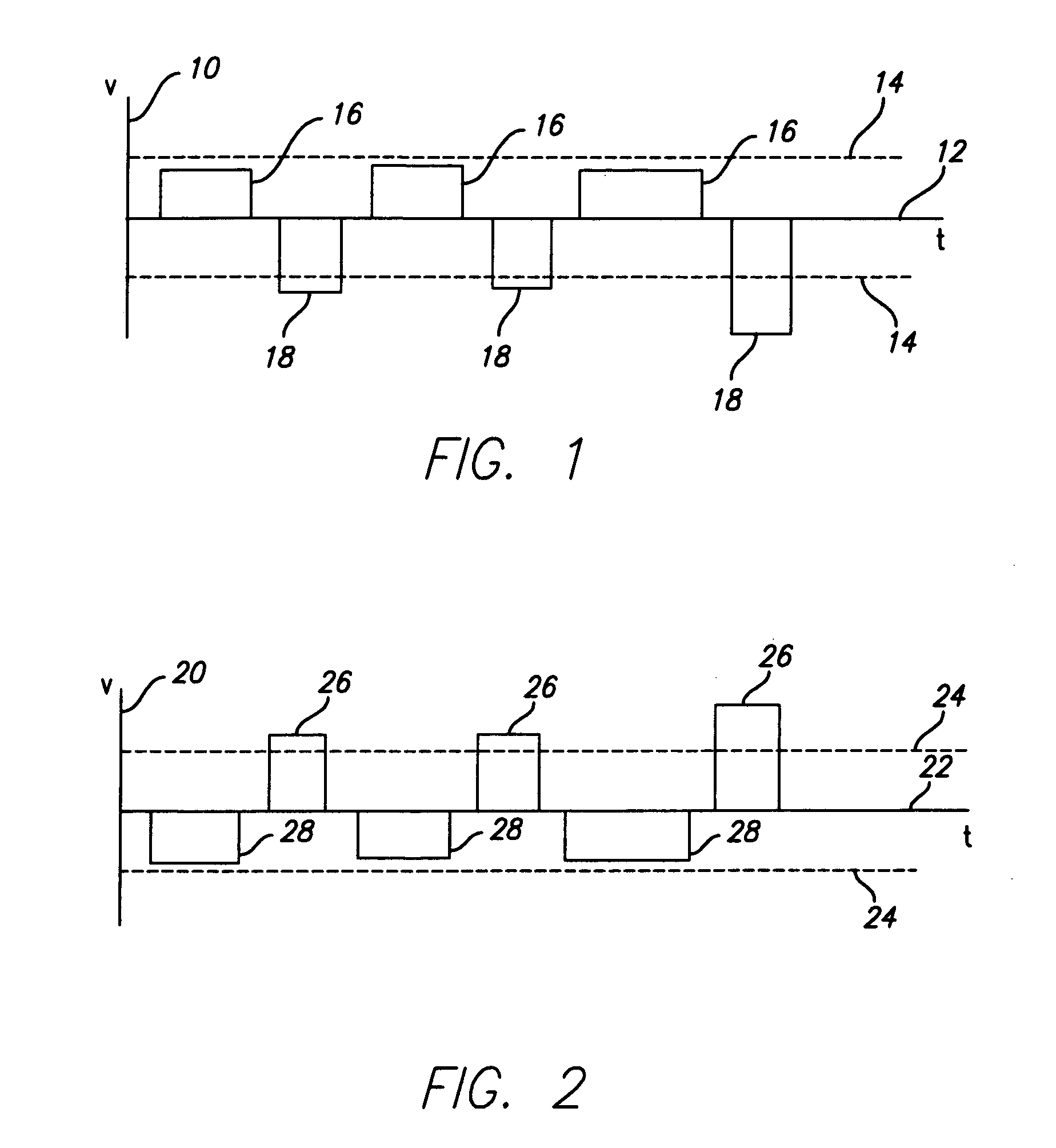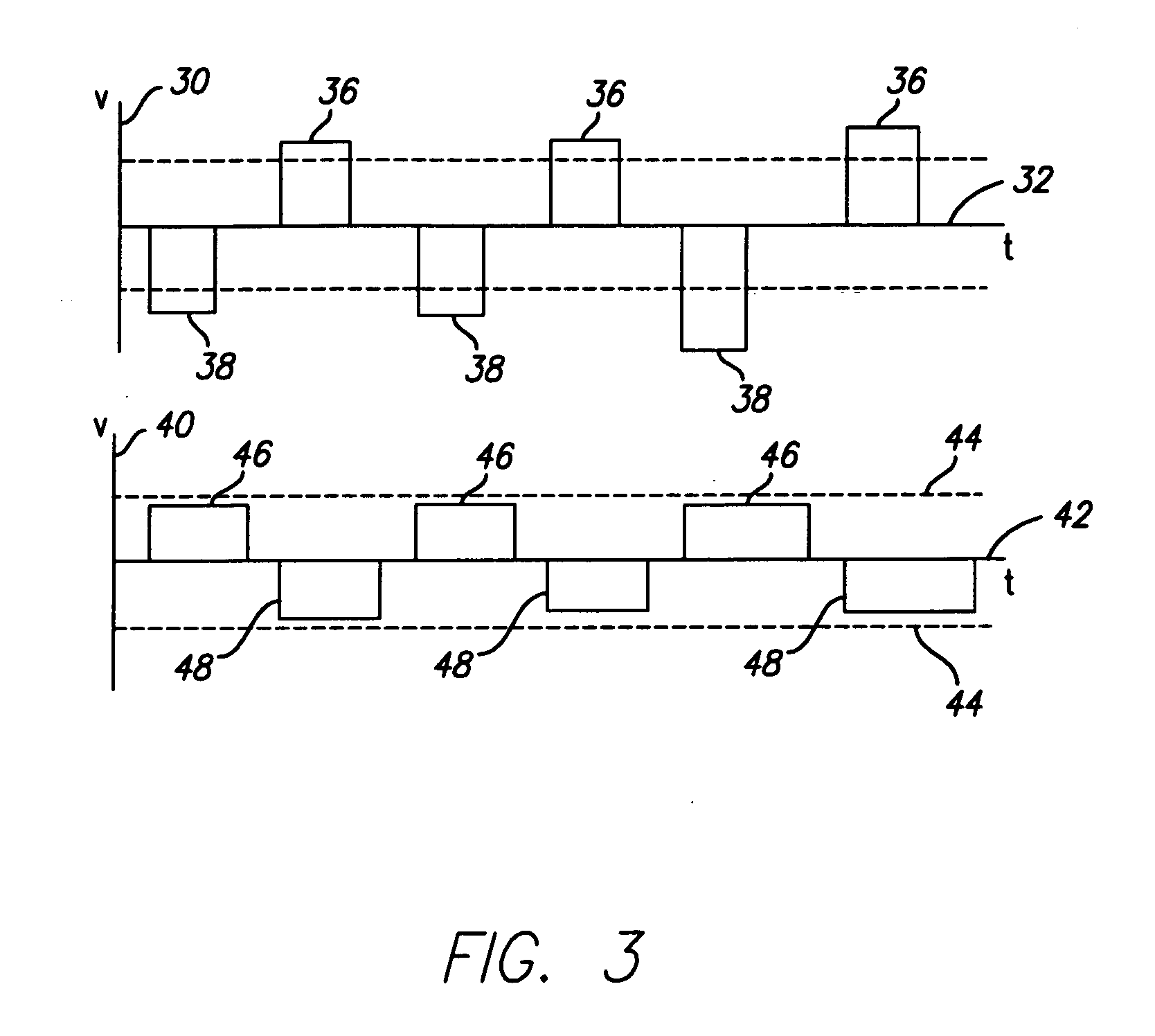Sub-threshold stimulation to precondition neurons for supra-threshold stimulation
- Summary
- Abstract
- Description
- Claims
- Application Information
AI Technical Summary
Benefits of technology
Problems solved by technology
Method used
Image
Examples
Embodiment Construction
[0033] The following description is of the best mode presently contemplated for carrying out the invention. This description is not to be taken in a limiting sense, but is made merely for the purpose of describing the general principles of the invention. The scope of the invention should be determined with reference to the claims.
[0034]FIG. 1, depicts the preferred method of stimulation for selectively stimulating smaller cells and smaller dendritic fields. The vertical axis 10 is voltage and the horizontal axis 12 is time. Dashed lines 14 show the threshold for firing. Stimulation begins with a sub-threshold anodic pulse 16 which hyperpolarizes larger cells and larger dendritic fields. This is followed by a supra-threshold cathodic pulse 18, which selectively stimulates smaller cells and smaller dendritic fields. In order to avoid damage to both tissue and electrodes, the stimulation must be charged balanced. Hence, the sub-threshold anodic pulse 16 must be longer duration than th...
PUM
 Login to View More
Login to View More Abstract
Description
Claims
Application Information
 Login to View More
Login to View More - R&D
- Intellectual Property
- Life Sciences
- Materials
- Tech Scout
- Unparalleled Data Quality
- Higher Quality Content
- 60% Fewer Hallucinations
Browse by: Latest US Patents, China's latest patents, Technical Efficacy Thesaurus, Application Domain, Technology Topic, Popular Technical Reports.
© 2025 PatSnap. All rights reserved.Legal|Privacy policy|Modern Slavery Act Transparency Statement|Sitemap|About US| Contact US: help@patsnap.com



